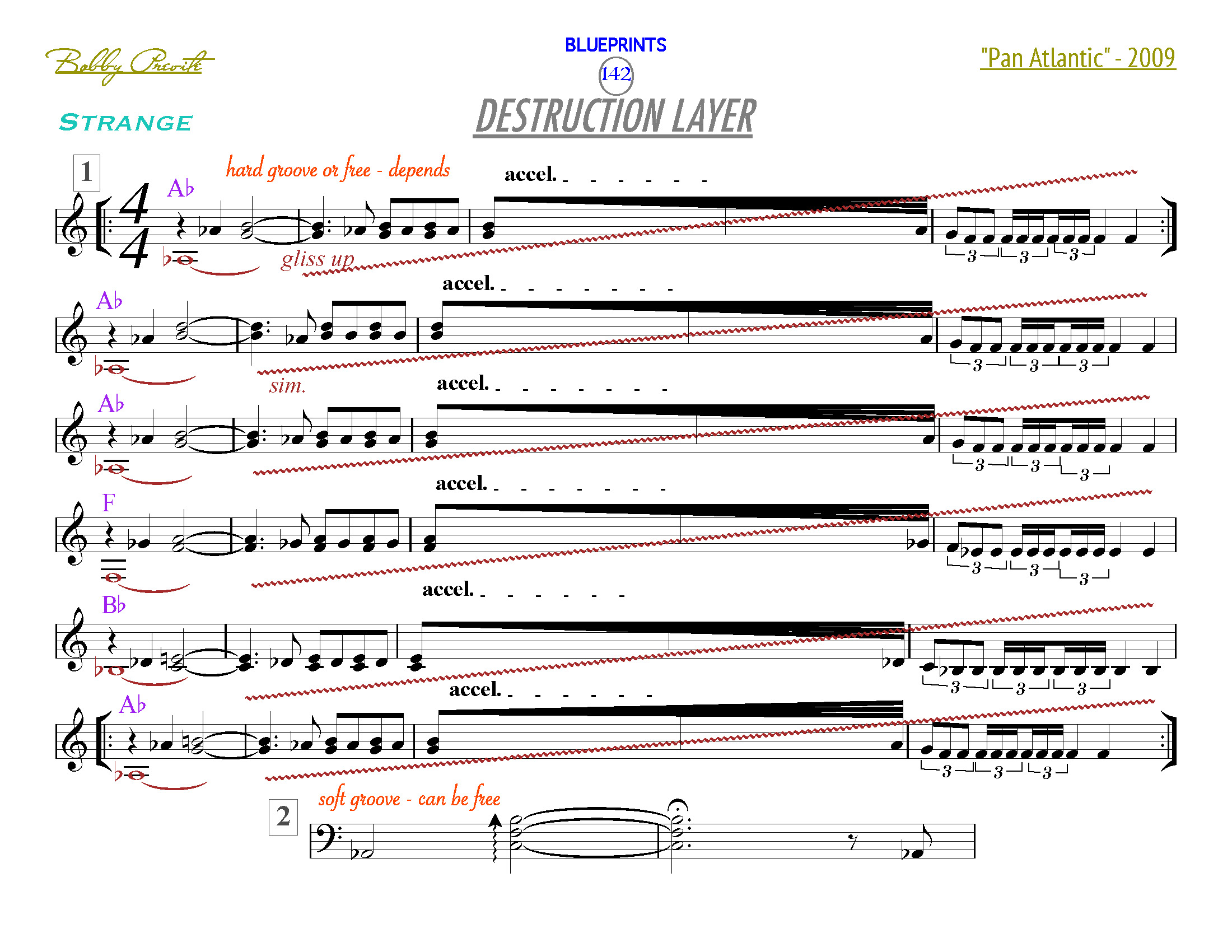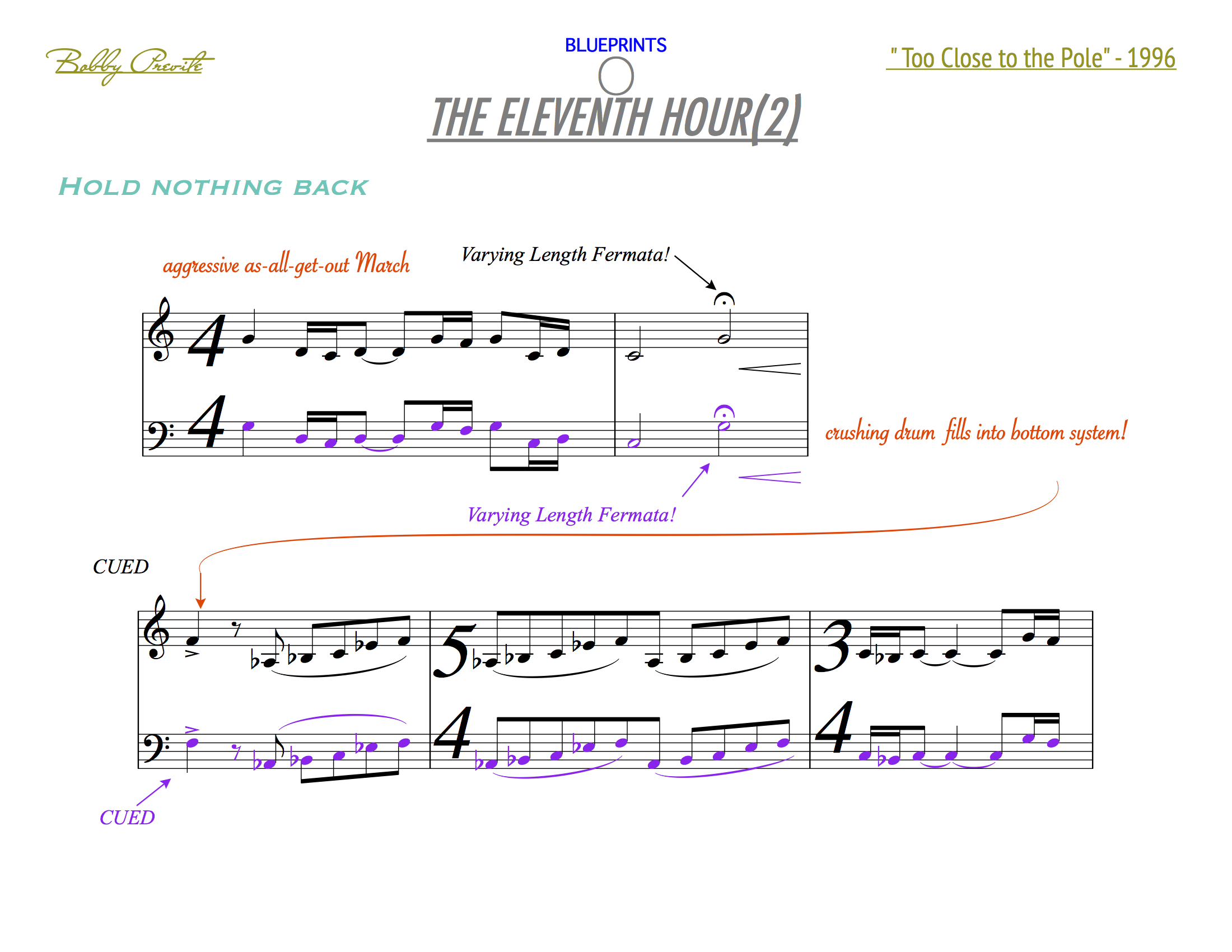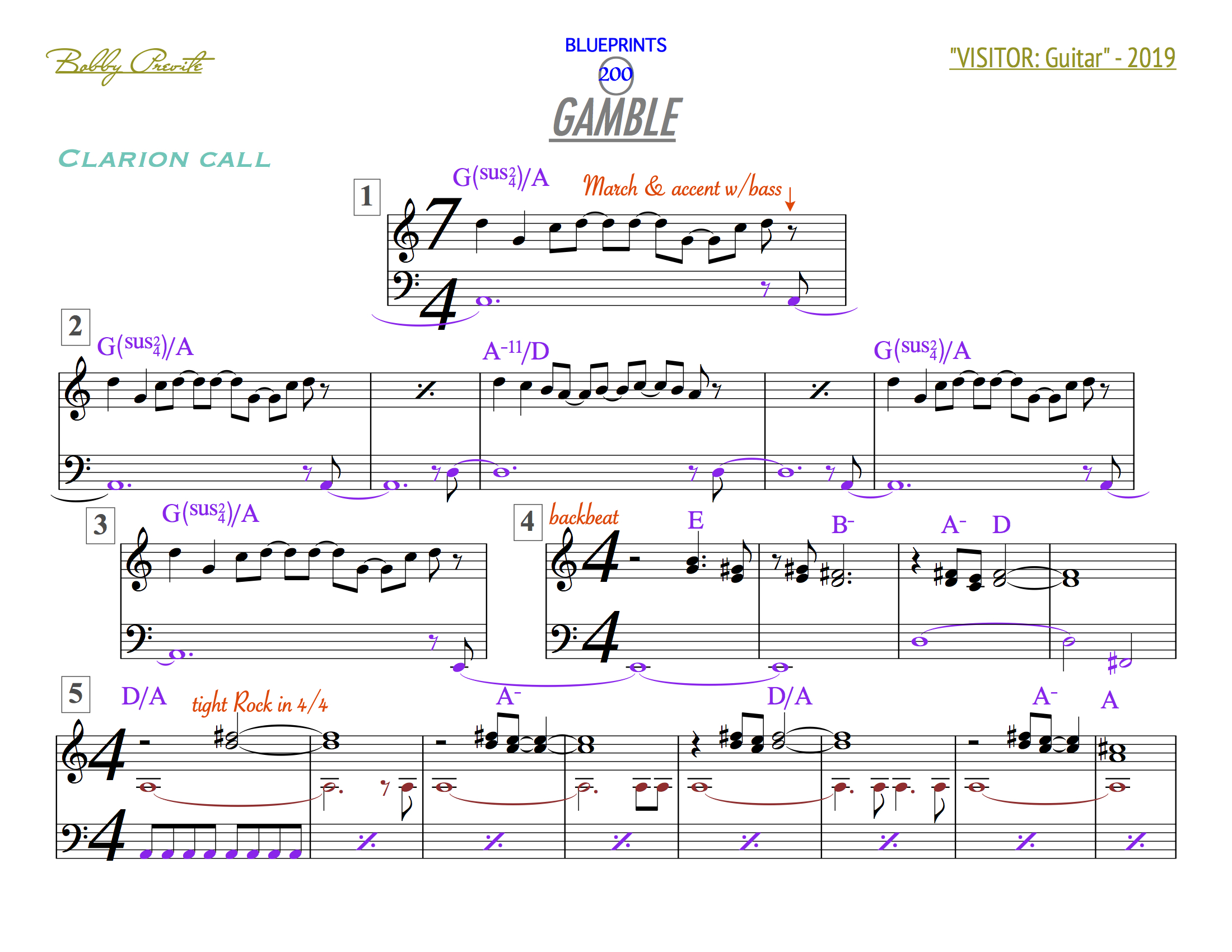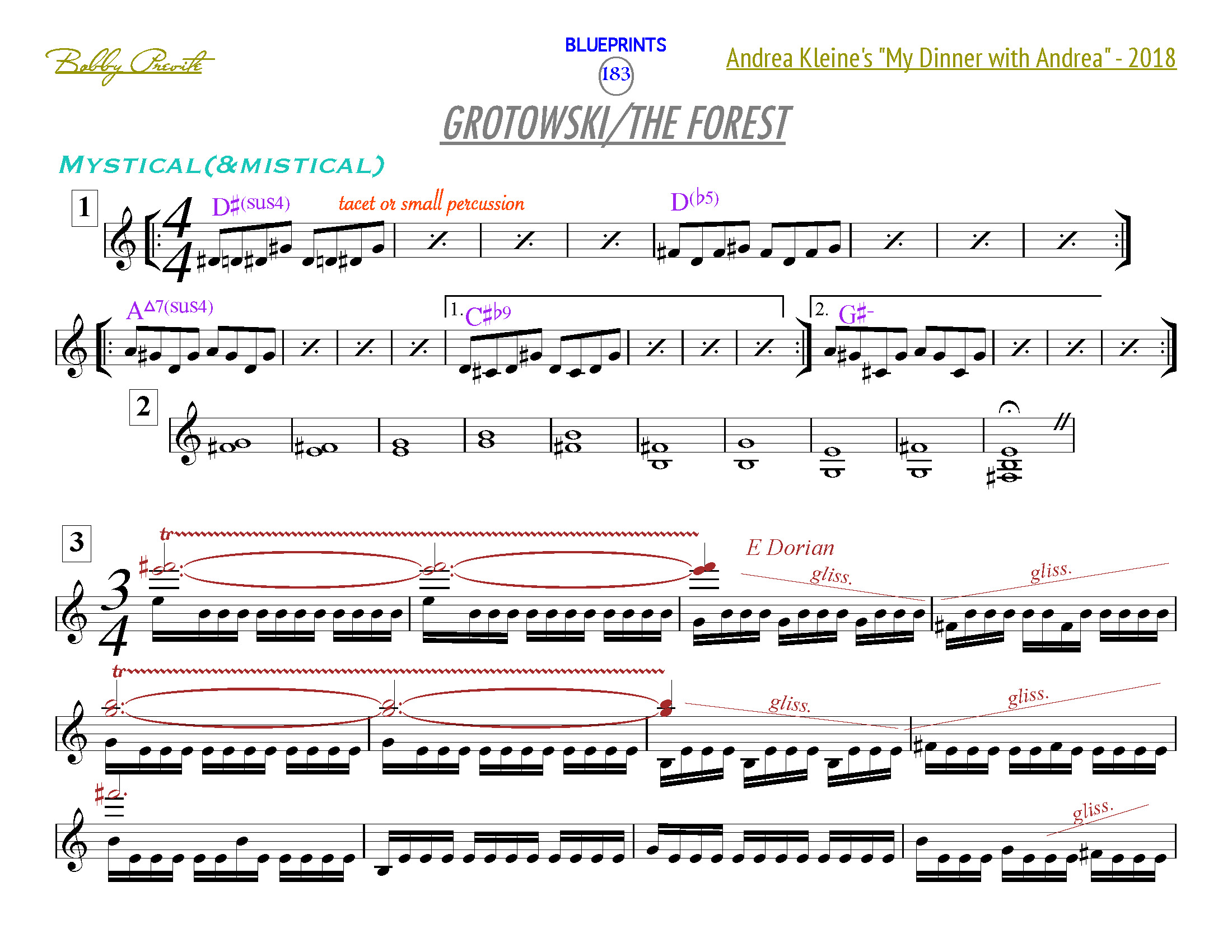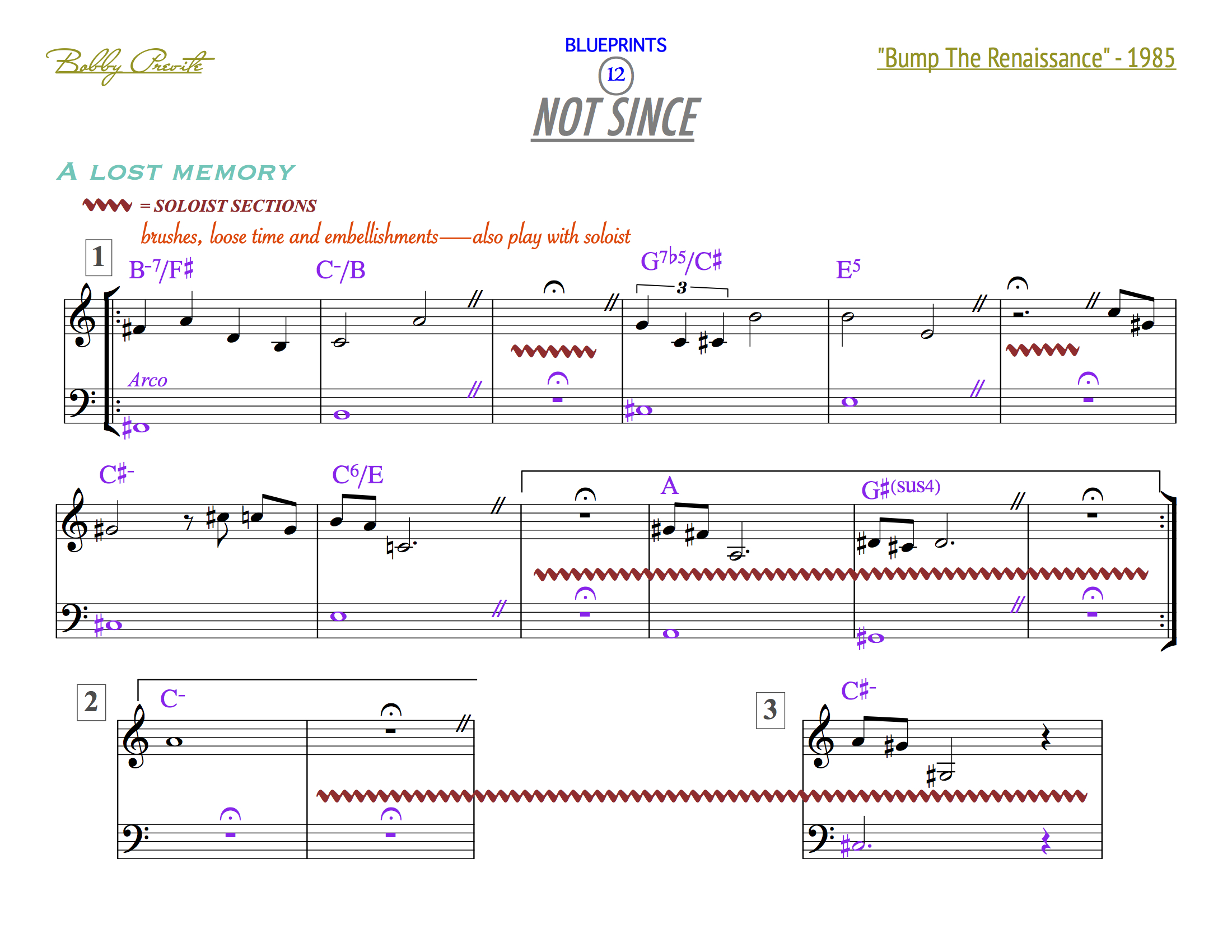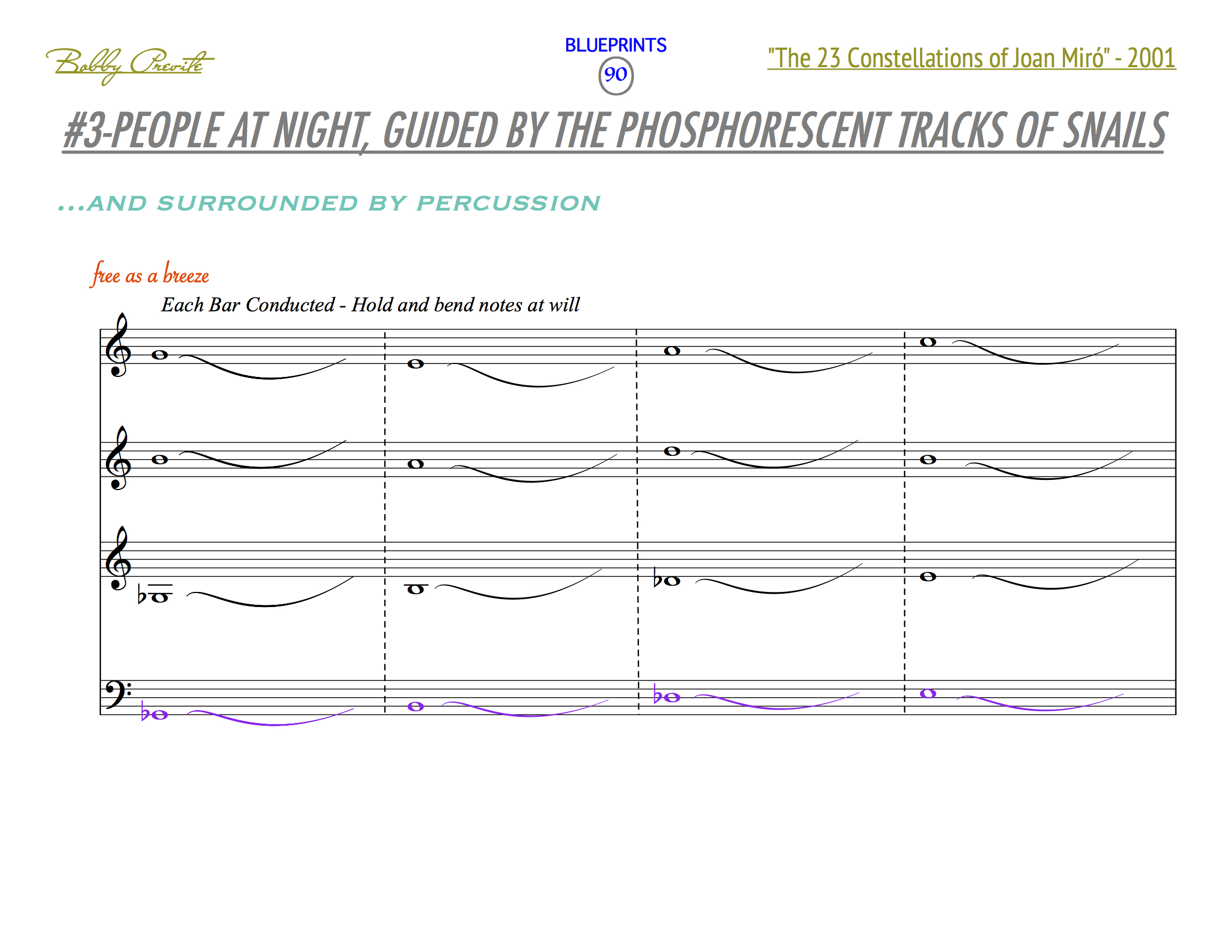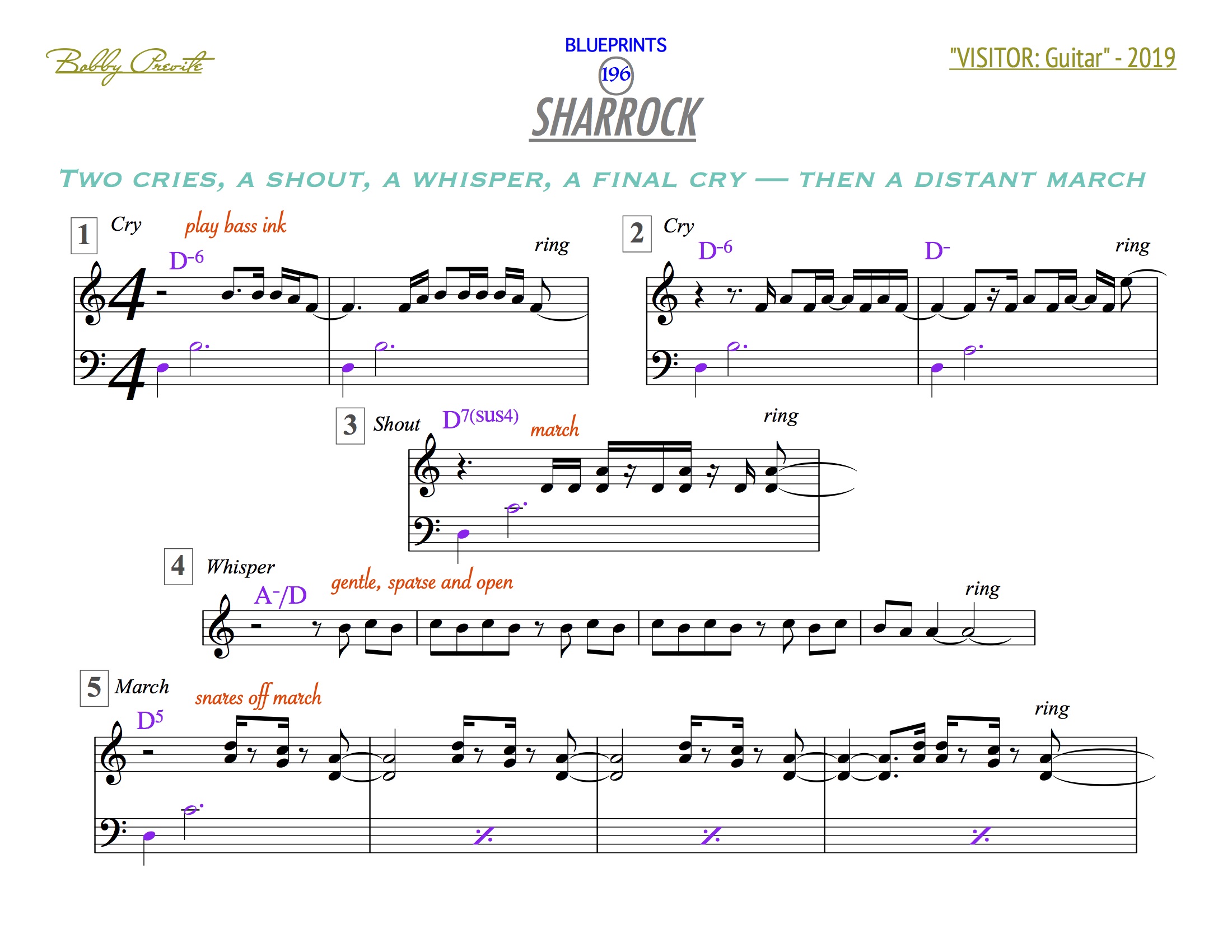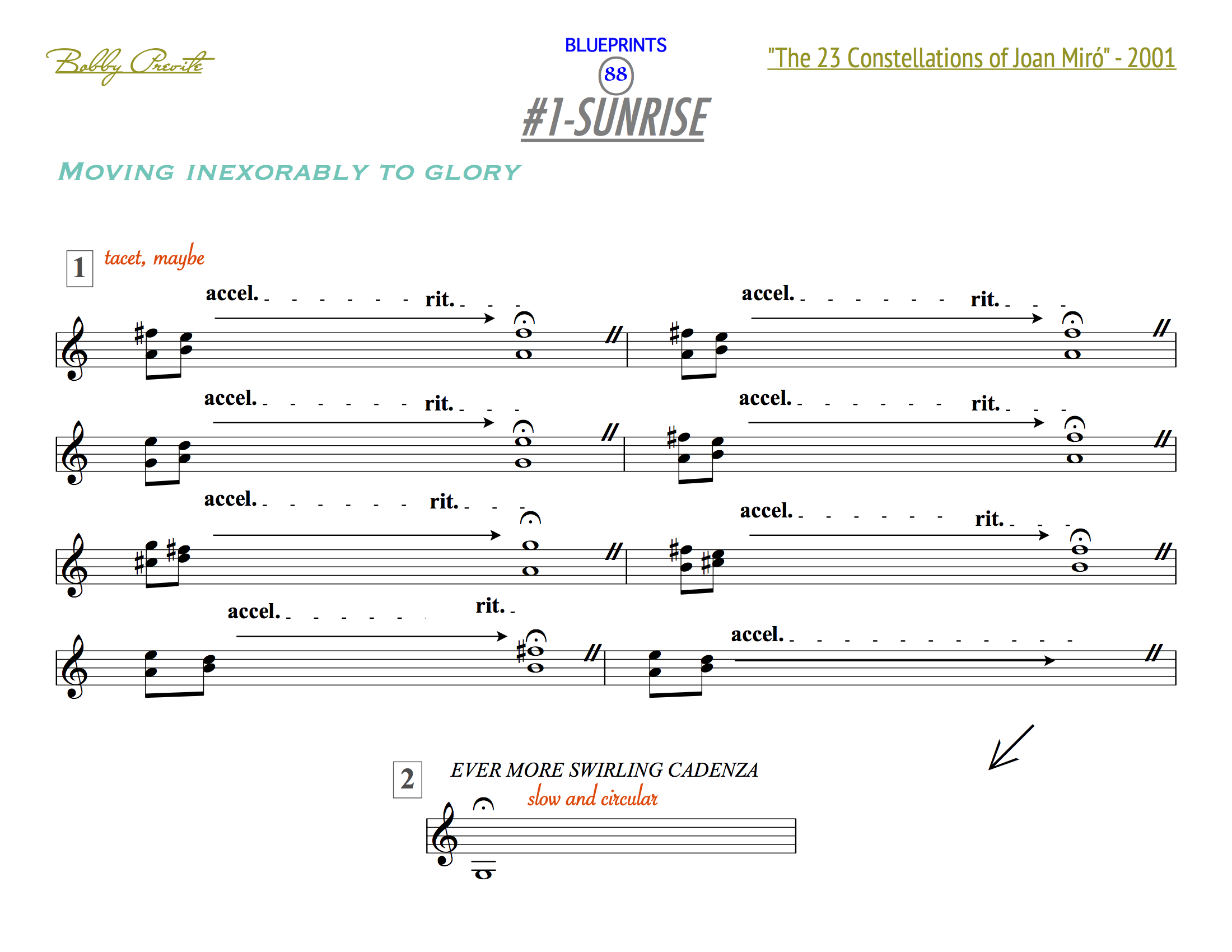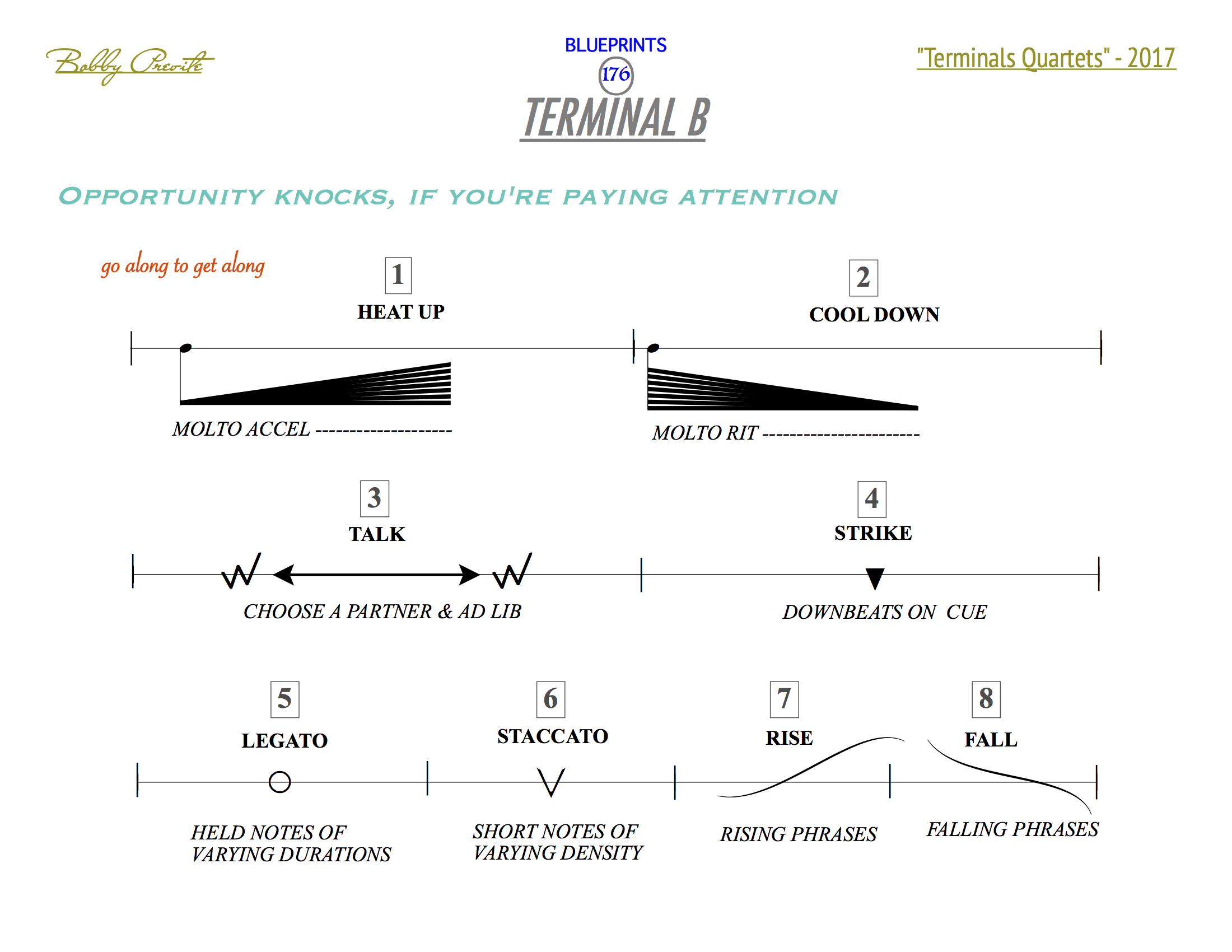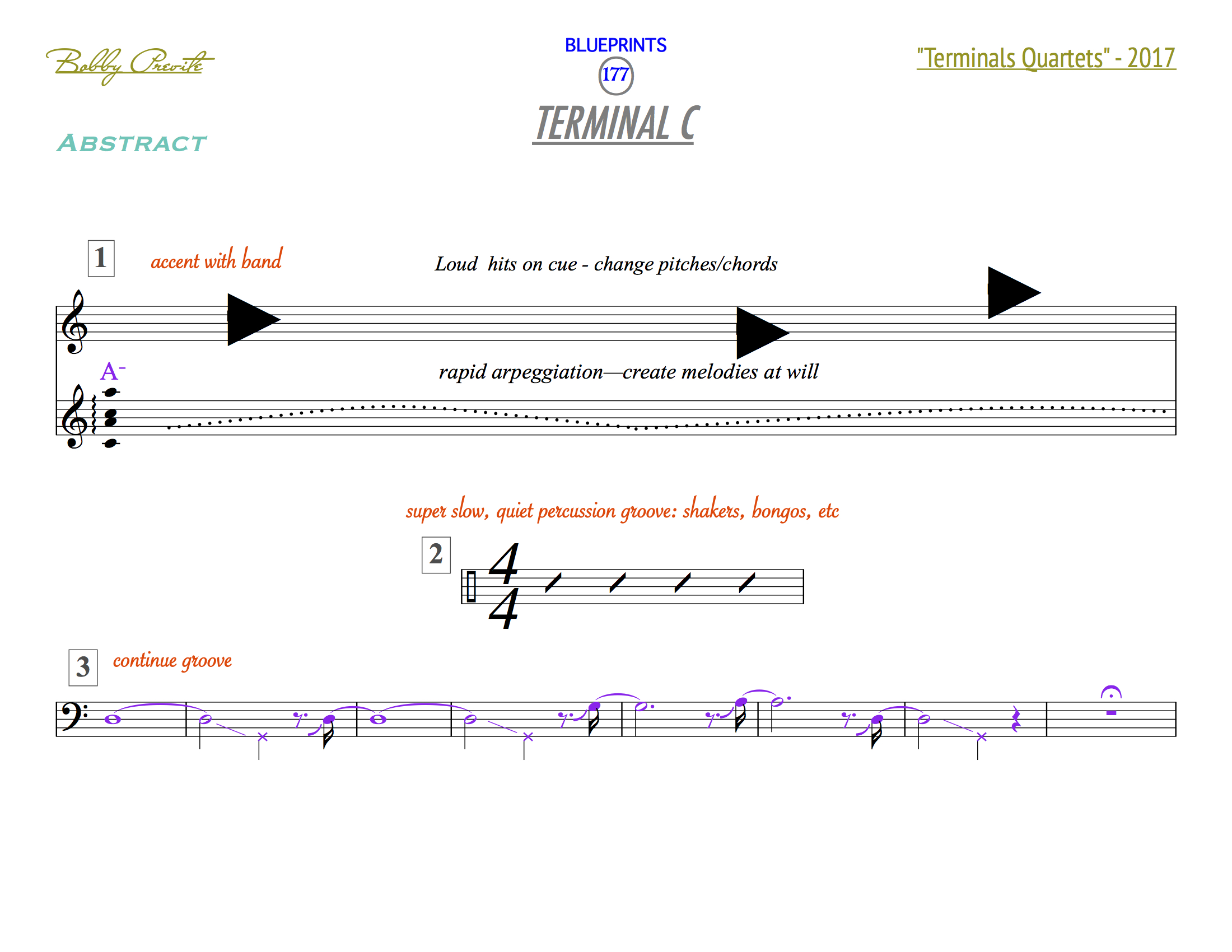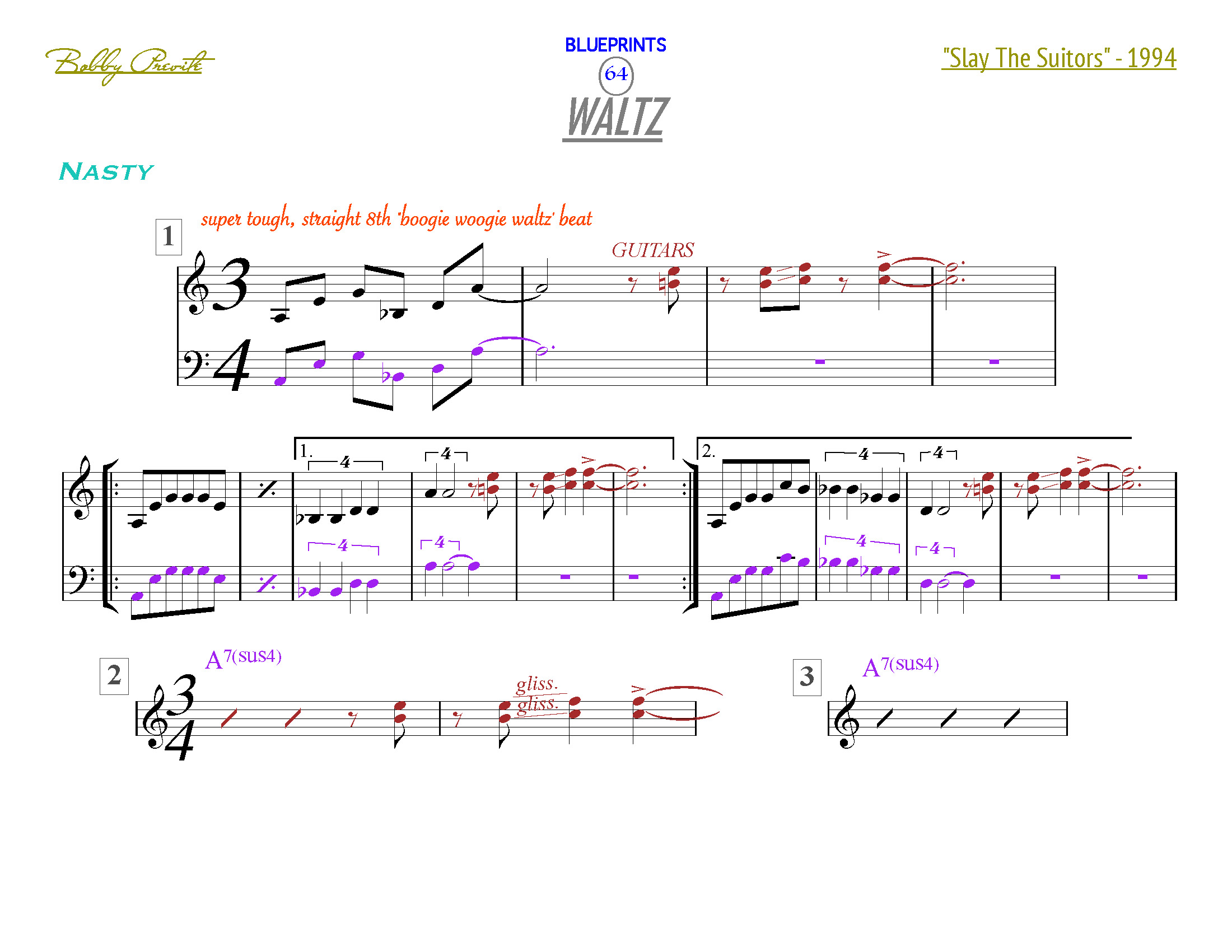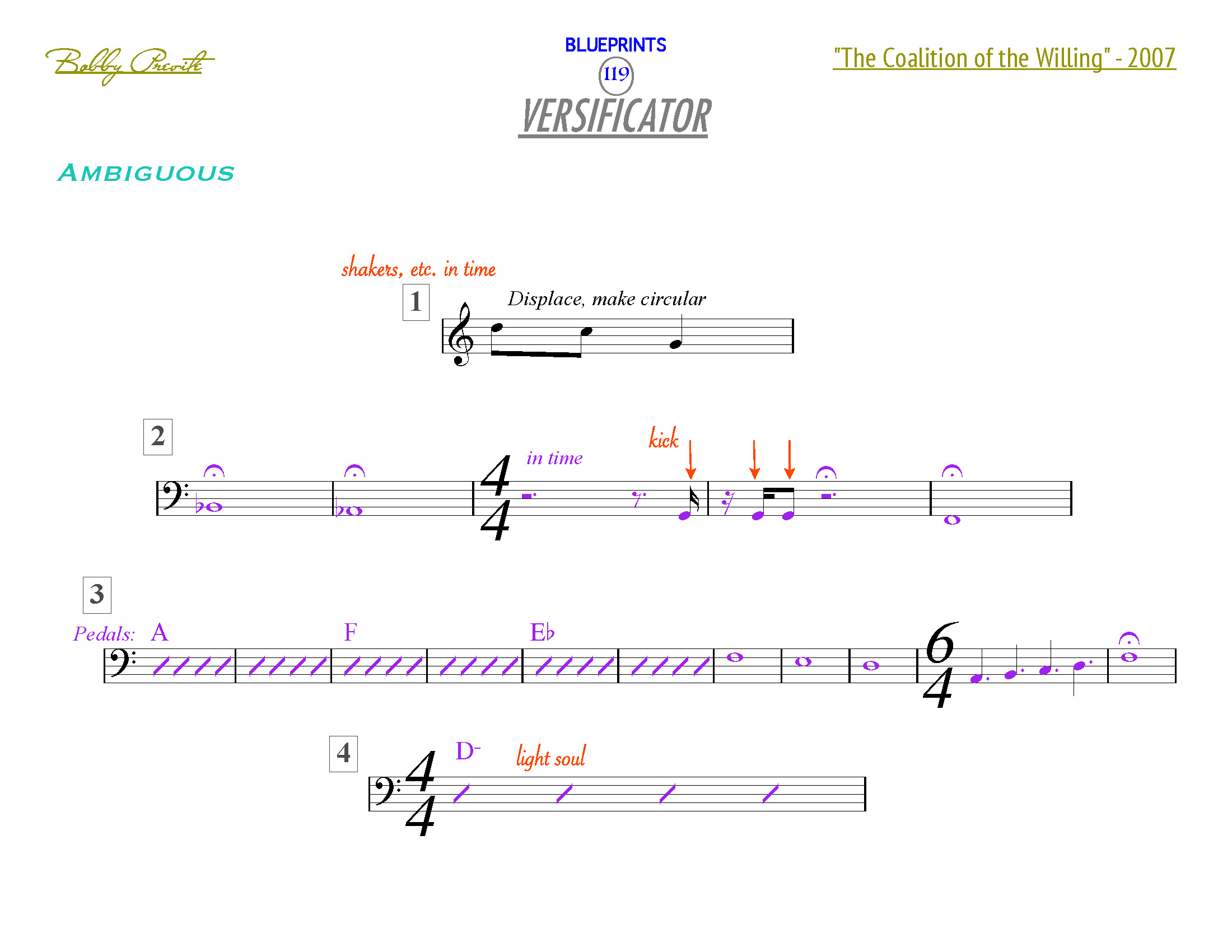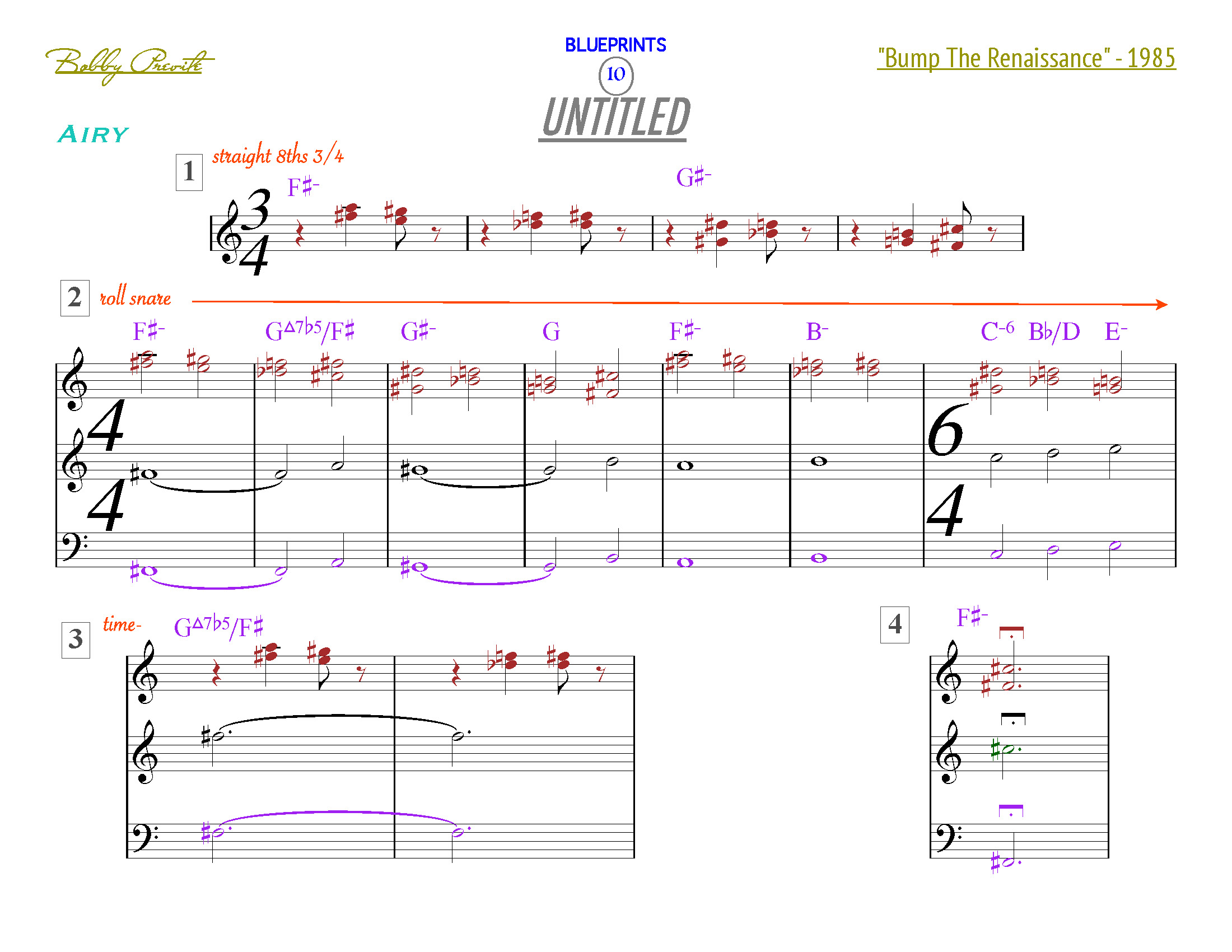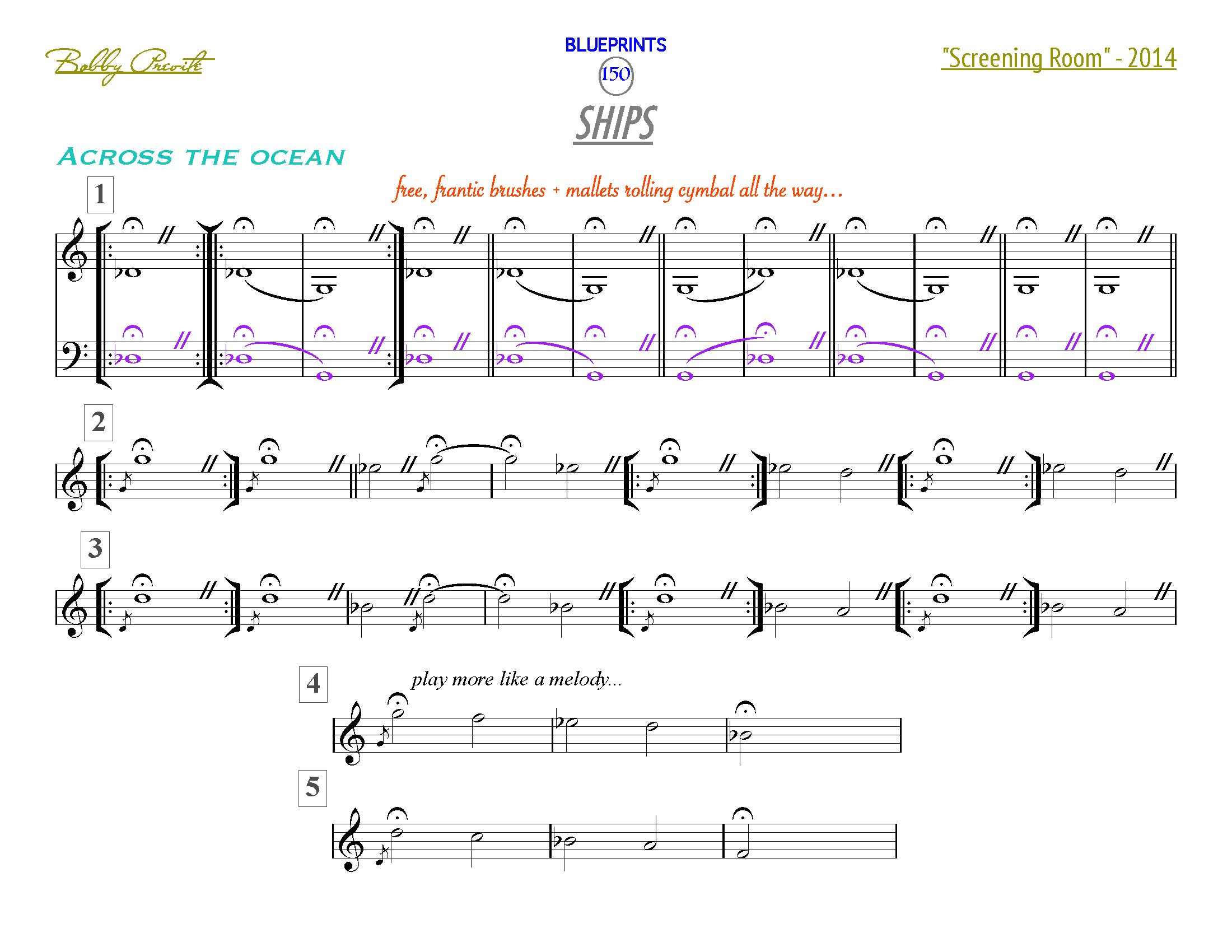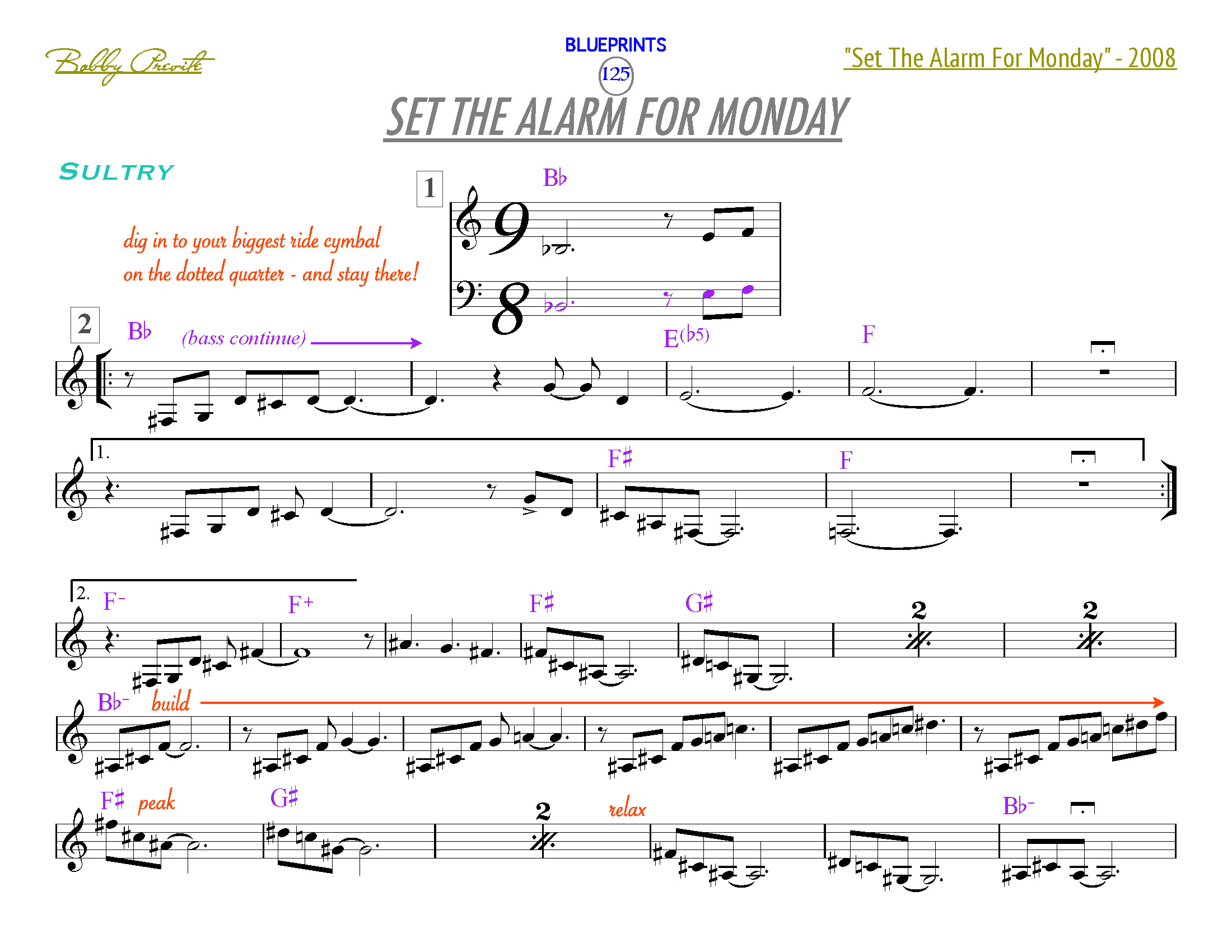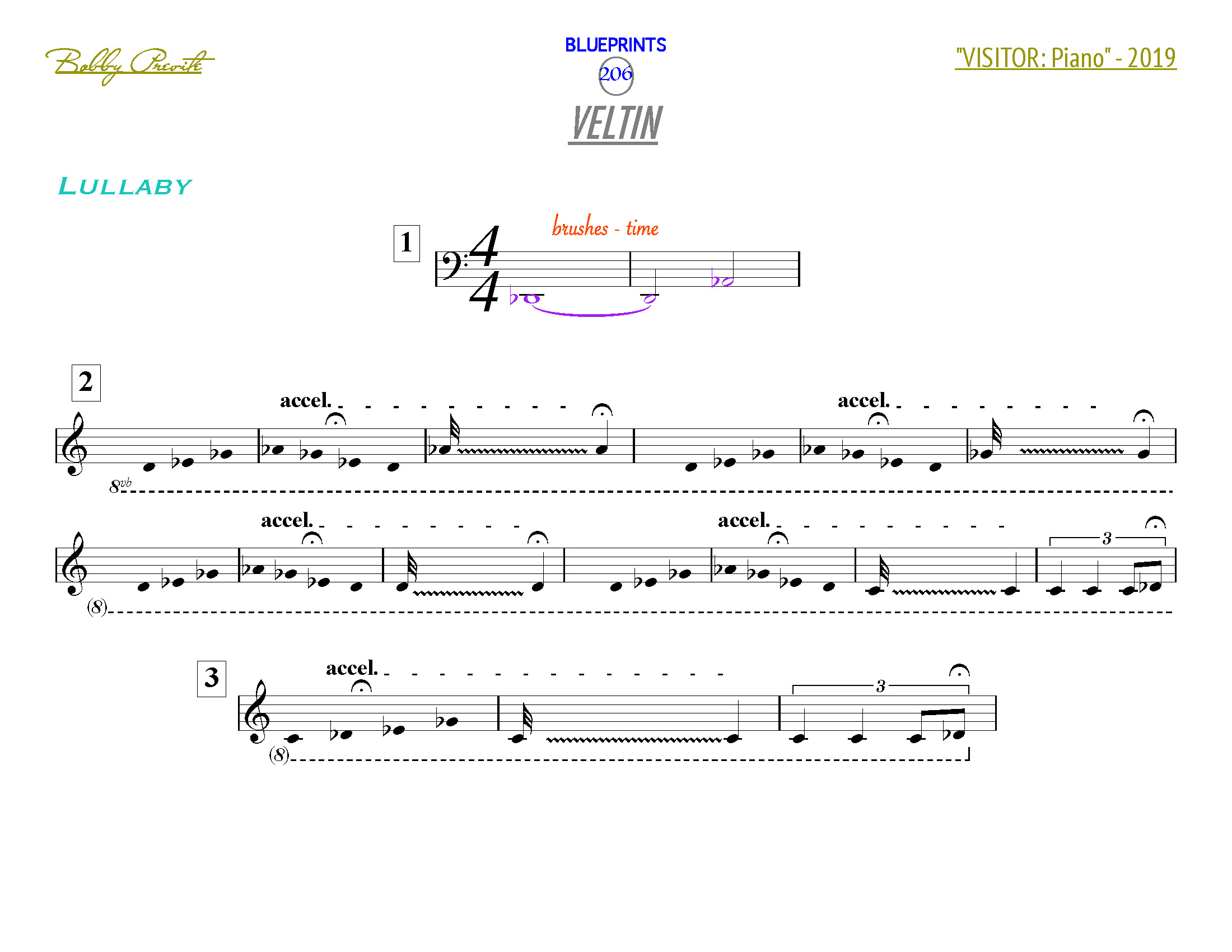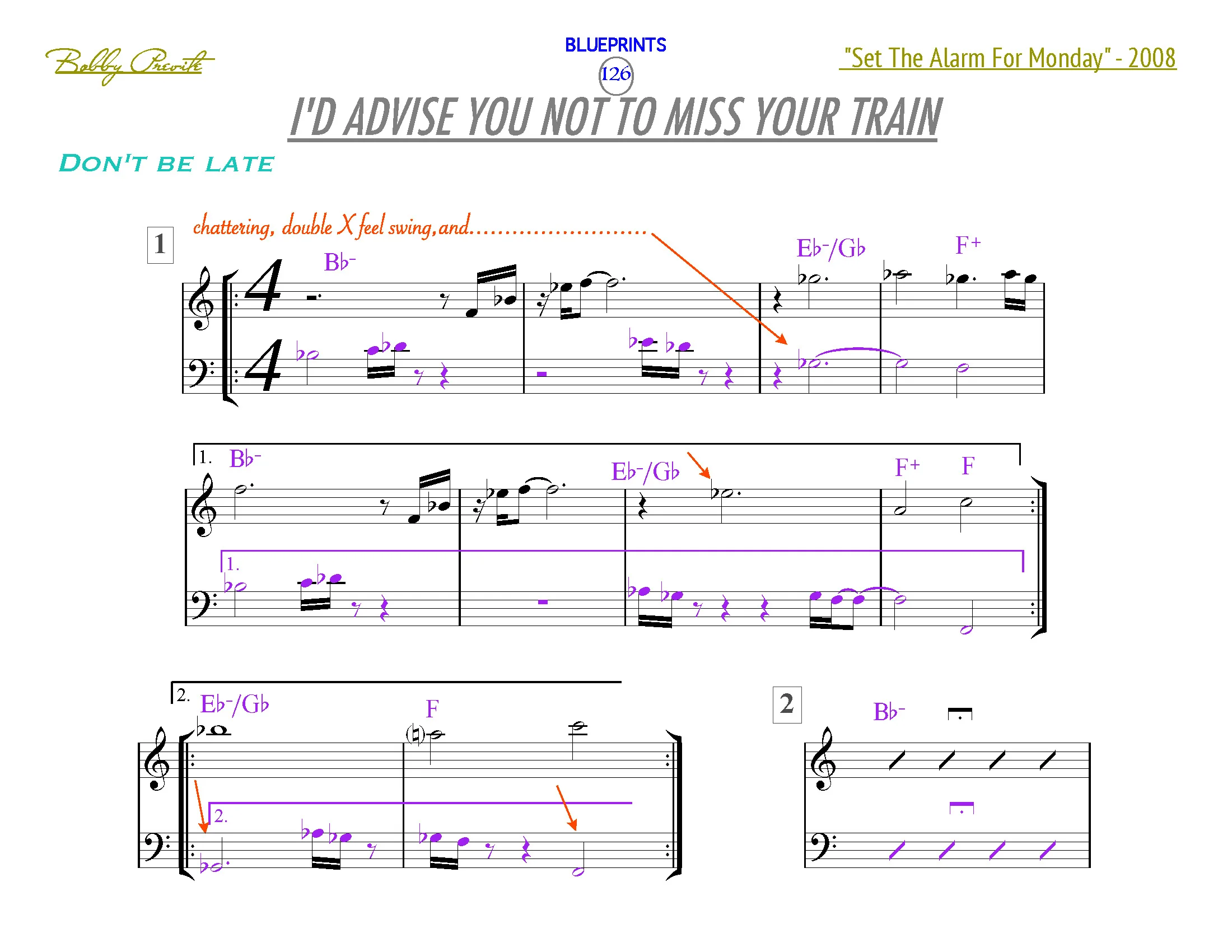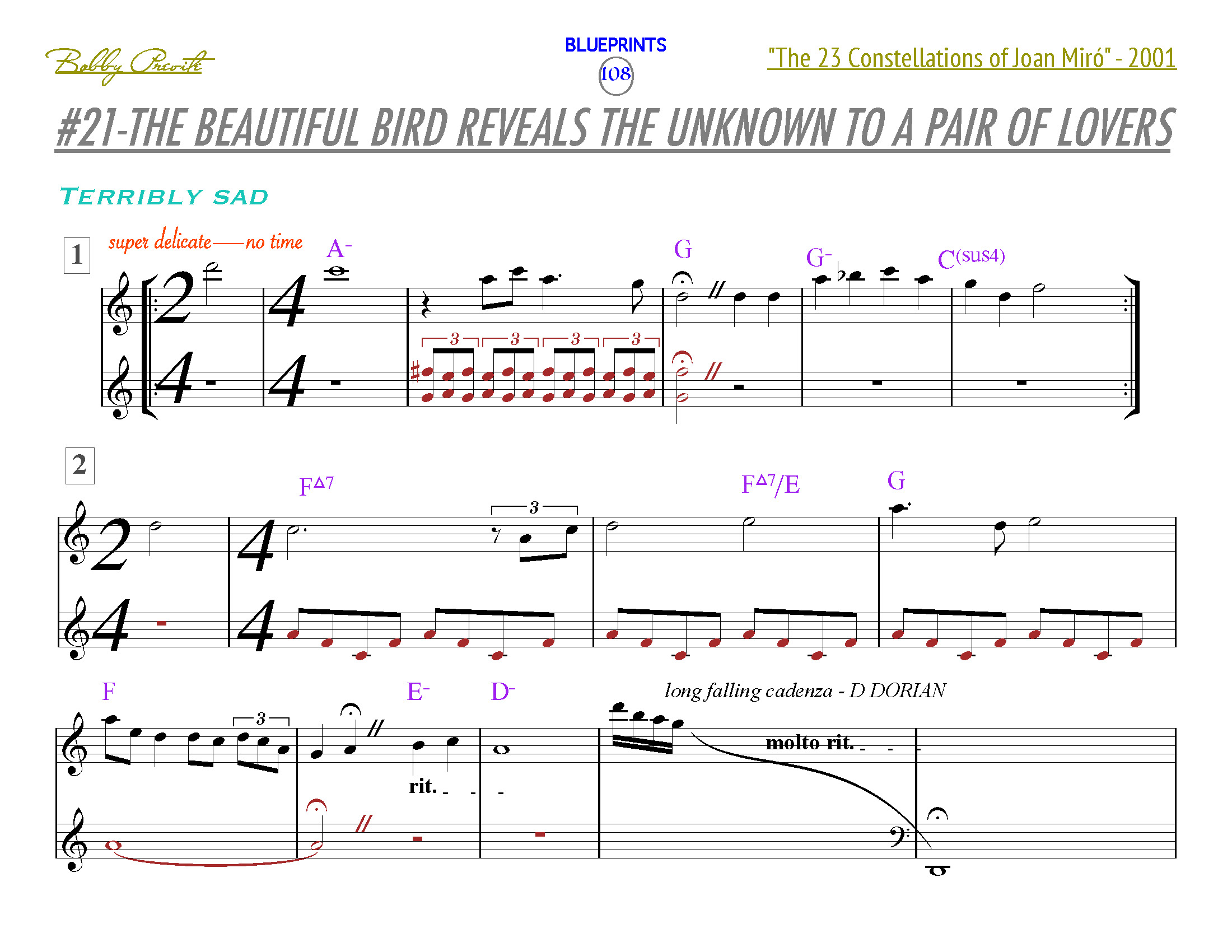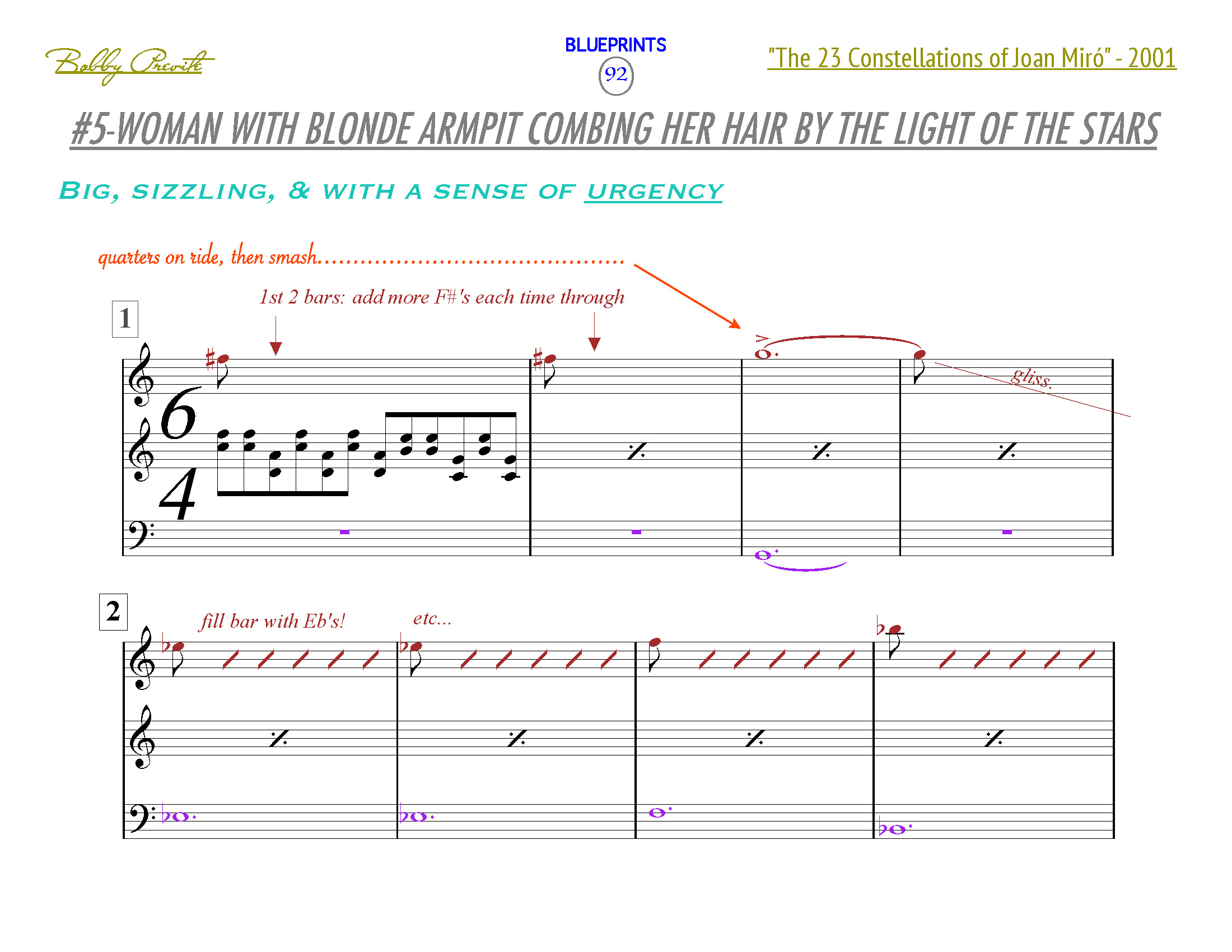BLUEPRINTS: Hundreds of fragments from 40 years of composing, projected on screen for musicians and audience alike, then inverted, reverted, subverted, coaxed out and conducted
I used to look back at my old music, and there were things I wished I could do again. Wouldn't that be fun, I thought, to do Empty Suits again, or Claude's Late Morning, or my Music of the Moscow Circus. But to mount each project, each band configuration again, rehearse it, etc., was too daunting. And then, why? I already had done it. Then I got this idea, where I can have my cake and eat it too. Instead I would take my favorite parts of every single piece of music I have ever written, extract them from the mother piece, strip them of all context (dynamics, instrumentation, tempo), and paste them up, one to a page, in a gigantic meta score.
Sometimes the fragments are a few bars, sometimes they are a melody, or just a chord progression, or graphic, or just a suggestion. Then I take this 'score' and project it from an iPad on a screen for the musicians to read. I can switch between each of these "blueprints" spontaneously, at will, and the musicians must follow. Using conduction, I can select different combinations of instruments, and also go 'outside' the written music by calling for solos, loops, loud bursts — anything can occur. Plus the musicians can always just improvise when they want, further developing/subverting the music. The original idea is thus completely transformed, but in a completely different way each time we play it, depending on which blueprints are chosen, when, and how they are played.
But here's the twist: not only do the musicians read from the screen — the audience does too.
I don't have much free time during the concert to take a peek at them, but when I do I see they are by turns mystified and wondrous as they try to connect what they are hearing to what they are viewing on the screen. Because sometimes what's on the screen is a pretty close representation of what's being played, but sometimes, when we are really playing off the chart, it's not at all.
We (myself and some great musicians who live nearby) have been Blueprinting at the HiLo in Catskill in upstate New York, a great little club, and it is there that Blueprints was first born and is now being developed. It is for a rotating ensemble of musicians, always changing week to week. They are my partners in bringing to life this "Symphony of Small Parts." Thank you, musicians!








